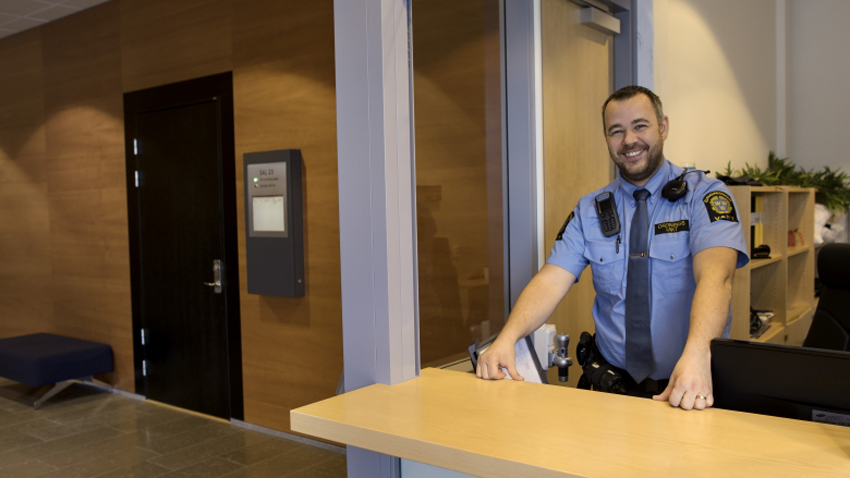“How courts handle people and their cases is of even greater importance than the resolution of the case, both for their inclination to voluntarily comply with the decisions of the courts, and for confidence in the courts. People who feel that they have been treated fairly in the court have an easier time accepting if they lose.”
Fredrik Bohlin, Judge at the District Court of Ystad, Sweden

Photo: Johan Wingborg
Courts around the world are increasingly adopting a more citizen-focused, user-friendly approach to justice. They recognize that user satisfaction is a key dimension of the quality of justice. And they know that when the courts are attuned to the needs of their users, trust and confidence in the entire justice system grows – bringing with it a range of positive spillover effects for the economy and the society.
But how to improve court user satisfaction?
First, it requires a detailed understanding of the experience of the court user.
Courts in Sweden have developed a simple, effective, and inexpensive way to do this. Their results are impressive. Moreover, their approach is highly replicable for other courts that are striving to improve the quality of justice. So we’ve prepared a short Case Study that examines the Swedish approach, including its methodology, timeframes, costs, results and lessons learned.
Download Study
The Swedes have a practice where judges and court staff conduct regular exit interviews with court users to gauge and improve the court user experience. Interviews are led by judges and staff themselves, and approximately 90% of court users agree to be interviewed. Users are asked about their experience in the court that day, including whether the information they received was sufficient, how they found the facilities, and how they were treated by staff. Interviews usually take 10-15 minutes and are conducted after the court hearing.
The findings are then pooled and discussed among judges and staff. Common problems are identified, brainstorming ensues, and low-cost solutions are then proposed and implemented. After some time, a fresh round of interviews is conducted to examine what has worked and what has not.
Thus, the cycle of continual improvement continues.
Follow-up surveys show that the measures introduced by courts have had a positive effect. Parties and witnesses report that they now receive more relevant information, that interactions with court staff have become more active, and that they feel more involved in hearings. The work has contributed to higher staff engagement and greater work satisfaction among court staff, and there is evidence of efficiency gains and a reduction in pending cases.
Interestingly, the Case Study finds that the most important aspect of the court user experience is communication. People come to court because they want to be heard, and they expect to be treated with respect and neutrality in the process. Communication cues (e.g. the judge making eye contact with the witness) can make the daunting experience of going to court that much more bearable.
Just look at this quote from a court user – a criminal defendant actually – who was interviewed after their hearing:
”The judge we had, she was so [good]. And the jurors were also good. The judge, she started with presenting herself and kinda [sic] talked a bit about what would happen...This makes you a bit less nervous and you can relax a bit. Yes, and then she listened, looked at me when I spoke, and I was able to say what I wanted... It doesn’t really matter if I go to jail.”
Even small conveniences – such as sending a parking map together with the summons – can make the process of coming to court smoother. Such demonstrations of empathy are particularly appreciated. Notably, they also help to improve the punctuality of hearings!
Interestingly, courts using exit interviews saw their caseloads fall after the methodology was introduced. Not only does this seem to debunk the myth that improving access to justice opens the floodgates for unsubstantiated claims. It also highlights the efficiency gains that can derive from improving the court user experience.
Of course, convincing judges and staff to change their behaviors can be tricky, as justice reformers around the world know well. That is why in Sweden, each court owns the process, conducts their own interviews, and reflects themselves on the results and next steps. Experience shows that improvements are more likely to be implemented and have more impact when they are home-grown in the courthouse, rather than edicts that are introduced centrally.
But we can’t all be Sweden, right? Well, on this at least, maybe we can.
All that is required is thoughtful leadership, a small operating budget, and a commitment to see the process through. The Swedish model does not require significant resources. Each court uses its own resources to conduct the interviews, propose measures and implement them. Smaller courts can team up with neighboring courts to increase efficiency and reduce costs. No legislative changes or grand strategy is required. The work is not centralized, so each court can adapt to their own circumstances. It’s simply a process of continual reflection and improvement that puts court users at the center.
User satisfaction is key to improving people’s trust and confidence in the justice system. This small Swedish model shows some very positive results - both for court users and the courts themselves. The model is readily replicable, requiring only a commitment from court presidents and staff to carry out the work and a small operating budget.
Other countries could benefit from examining this approach and considering how it could be applied to their own courts
